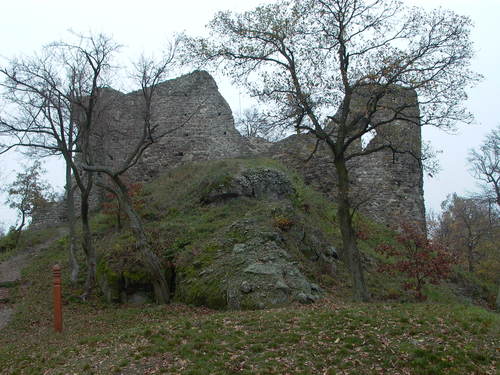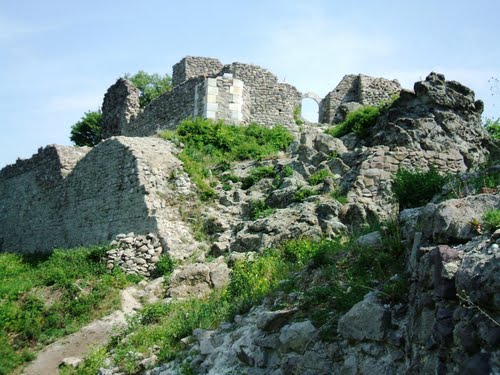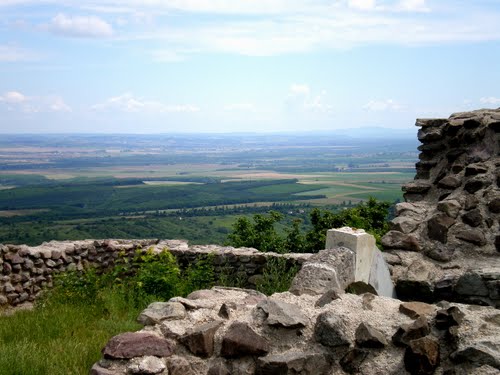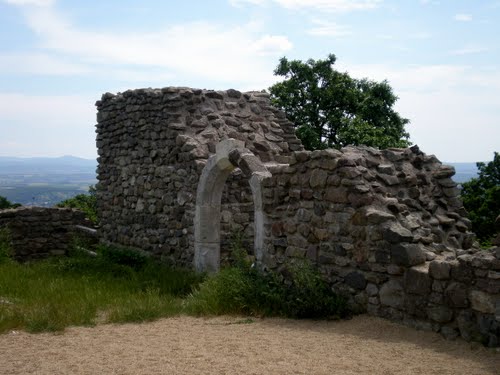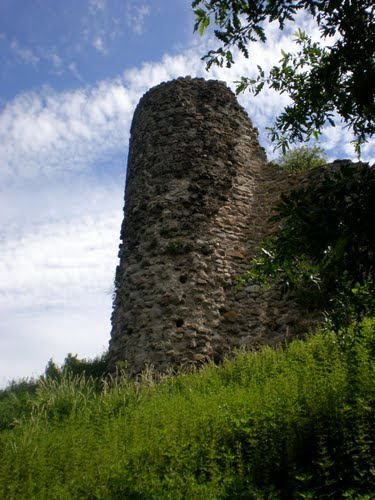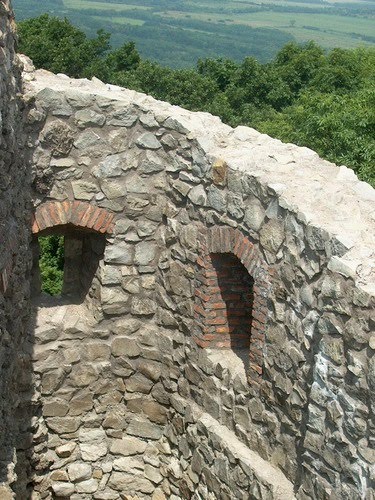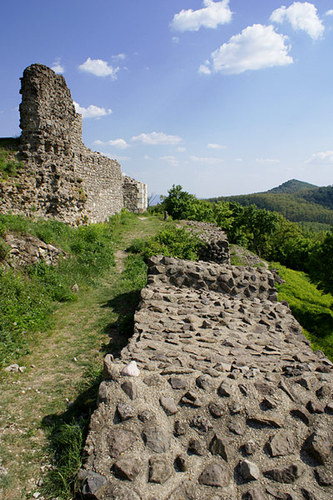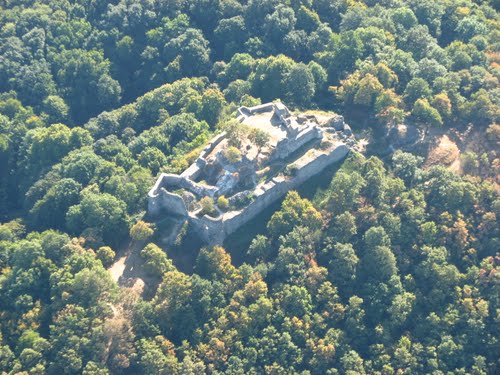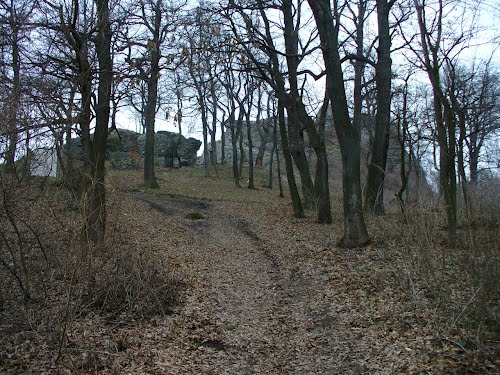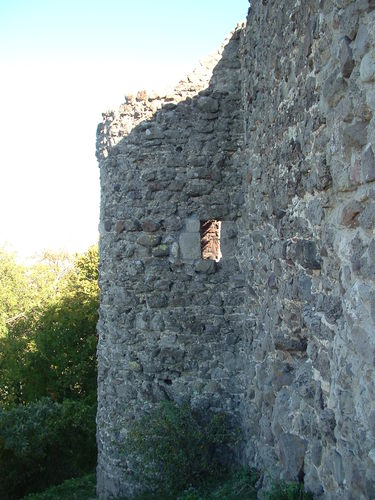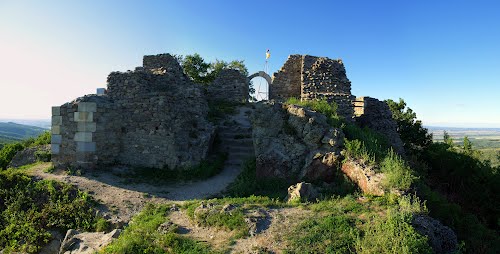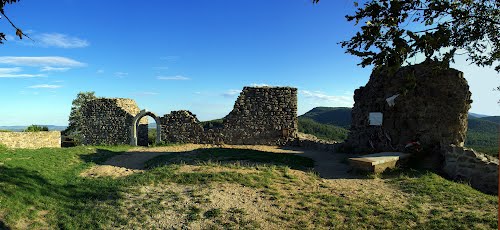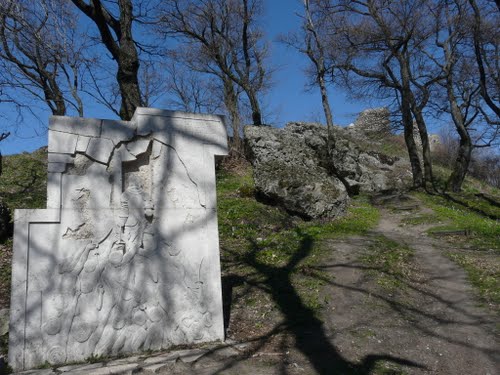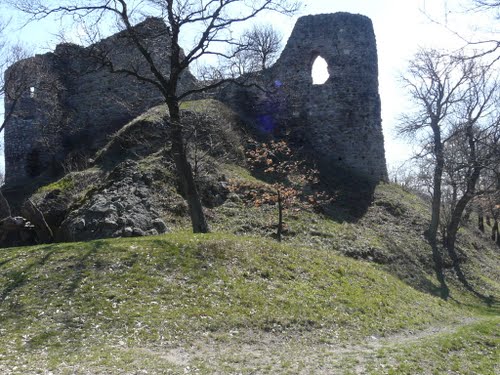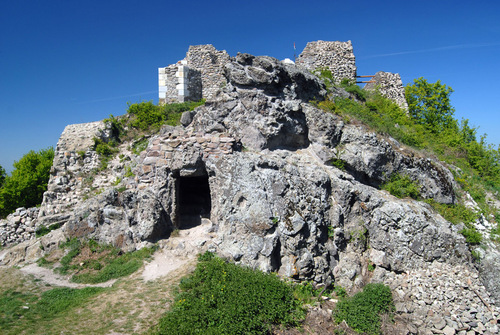Dregely Castle is a 13th-century hilltop castle in Nograd County, Hungary. It is in ruins, but being restored.
History
The small castle was probably built by the Bozok branch of the Hunt-Poznan family in the second half of the 13th century, during the Arpad dynasty, by order of Bela IV. It was first mentioned as Latin: Castrum Dragul in a charter of 1285 as the possession of Demeter of the Hunt-Poznan family. The proprietors had to surrender to Mate Csak III in 1311. After the death of this oligarch in 1321 the castle was overcome by the army of Charles I of Hungary. At that time Dregely Castle served as the county dungeon and held the archives of Hont County.
In 1390 King Sigismund exchanged the castle with the Tary family for lands in Somogy county. Later the King reacquired Dregely because of the despotic measures of the Tary family and their castellan.
In 1438 Dregely was gained by the Archbishop of Esztergom. The high priest rebuilt the castle to be his hunting seat.
Dregely came under military control again after the fall of Buda in 1541. It became part of the border castle system designed to repel invaders of the Ottoman Empire. Archbishop Pal Varday spent much money to strengthen the castle. In 1543 Esztergom, the centre of the archdiocese, fell. Next year the castles of Vac and Nograd fell too. Dregely became part of the first line of defence for the kingdom. In 1544 Varday appointed Gyorgy Szondy to be castellan of the castle and the governor of the Dregely estate. Szondy tried to fortify the small fortress against Turkish invaders. Varday died in 1549, and the local guards were no longer paid regularly. In the same year lightning struck the castle, but it hardly damaged the walls or the gunpowder depot.
In 1552 Hadim Ali Pasha of Buda laid siege to the castle at Veszprem and captured it on 2 June. The Turkish army turned its attention to the castles of Hont and Nograd counties. The army of Ali Pasha – about 10,000 to 12,000 strong – got below Dregely Castle on the morning of 6 July. The defenders of the castle consisted of 120 men hired by King Ferdinand and 26 warriors sent by the royal mining town of Banska Stiavnica (then Schemnitz or Selmec). Ali Pasha immediately called upon Szondy to surrender. After the Hungarian refusal Ali the castle's outer wooden wall be set on fire. Because of the first combat the defenders withdrew into the inner stone castle. At the following dawn, Turkish engineering corps built a counterfort on a place called Varberc ("Castle Crag") where Turkish artillery started a cannonade against the castle gate using three cannon and six howitzers. The cannon fire continued for two days.
On 9 July 1552 the high castle gate and its tower collapsed. That was when Ali Pasha sent the priest Marton as envoy to persuade Szondy to surrender. Szondy refused again, but he sent his two pageboys accompanied by two noble Turkish captives to Ali. They brought the message that the castle would be defended until the last breath. Szondy asked Ali to educate the two boys in exchange for the release of the two Turkish prisoners, and for himself to be buried with full honours. As reply to Szondy's repeated refusal Turkish troops started a decisive attack on the castle. Szondy was shot in his knee and the subsequent bullet killed him. The defenders were killed until the last man. Dregely fell, but Ali paid tribute to the brave dead castellan.
During the siege of Dregely the royal army of about 8,000 camped at Levice, but the commander of the army, Erasmus Teuffel, did not take any action to help the besieged castle. The fall of Dregely started a chain of defeats of castles of Hont and Nograd counties. Ottoman troops conquered nine-tenths of the castles in the two counties in short order, because most of the defenders of the neighbouring castles deserted. At the end of the July there was an enormous gap in the Hungarian border castle system. The royal army belatedly tried to stop the Turkish troops at Plastovce but in a two-days battle they were utterly routed, and 4,000 German and Italian warriors were deported to Istanbul.
The completely ruined stone castle of Dregely was not renewed. Turkish troops used its remnants as a watch-post for a while, then in 1575 built a new earth fortress in near village of Palank. The castle hill returned to forest. The building lines of the former castle were disappearing.

